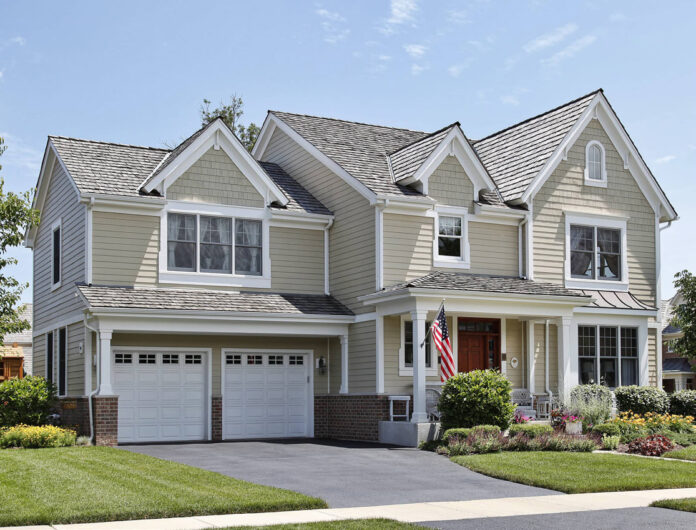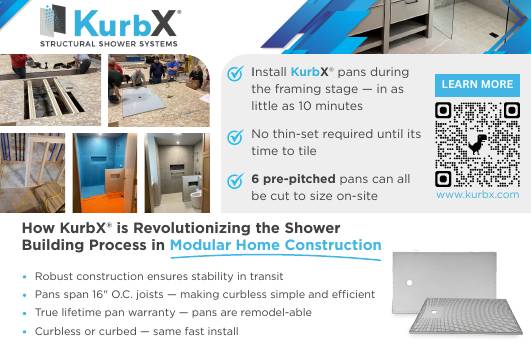Every day you stick-build is a day that modular builders pocket the profits you left on the table.
- Rather than higher costs, builders who’ve switched to modular are finding hidden profit streams.
- The real jackpot isn’t just speed: it’s the ability to unlock new revenue months earlier than competitors.
- The biggest obstacles to modular’s growth aren’t price or logistics: they’re outdated builder habits and financing norms.
Material shortages. Weather delays. Hiring challenges. Modular advocates insist that their way of building offers a solution to these and other woes. So why has it yet to capture more than a tiny share of the US homebuilding market?
Part of the answer is that some builders assume that a modular home will cost more per per square foot. That’s misleading, however. A narrow focus on initial price ignores the monetary value of time saved by modular, as well as things like reduced overhead and labor costs. Once factored in, these can give modular a cost advantage.
And on some projects, modular can even offer a lower initial price.

Production or Custom?
The industry has been looking at modular costs for decades. Back in 1999, researchers with the National Association of Home Builders calculated that a stick-built home of the time could be built for an average $144,700, while a comparable modular home averaged just $129,800 — roughly 10% less once all costs were included. (These findings were cited in a July 2023 publication from the Harvard Joint Center for Housing Studies entitled Comparison of the Costs of Manufactured and Site-Built Housing.)
More recently, an October 2024 article at NewHomeSource.com (“Modular or Stick-Built Homes: Comparing Costs”) by Sue Durio, estimated modular costs of $110 per sq. ft. On average, compared with $150 to $250 for stick-built.

One very valid objection to the above numbers is that average project costs are misleading in an industry where each project is unique. Averages might reflect costs for a development of simple production homes, or for multifamily buildings with lots of identical boxes, but not for custom work.
This point is one that custom modular builders also make. In a September 2024 House Beautiful article entitled “How Much Does a Modular Home Cost?”, Monique Valeris interviewed John Colucci of Westchester Modular Homes in Wingdale, New York. At least when it comes to custom homes, Colucci tells customers that there are too many variables to cite square foot costs. The initial cost could be a bit more or a bit less than an identical plan that’s stick built.

Time Is the Trump Card
The real edge is time savings: The Modular Building Institute in Charlottesville, Virginia, reports a schedule reduction of 25% to 50% versus stick building, given two similar designs.
In some cases, a faster build can give modular a price edge. There are many case studies available online about this. For instance, in a 2025 blog post entitled “The Benefits of Building Modular Construction vs. Site-Built Homes,” Buffalo Modular Homes in Williamsville, New York, tells clients to expect their build to require eight to twelve weeks, compared with six months to a year for stick-built.
The builders we’ve spoken with who have used modular and other building systems, offer similar numbers. One of these is Matt Belcher, Principal of Enhanced Building Systems in Owensville, Missouri. “[Time saved] depends on the complexity of the home, but it’s in the range of 50-70%,” he says.
Another advantage of modular, is that there’s a minimal need for sub-trades. “Connecting the house to utilities only takes a day or two depending on the scope, compared to a week for rough-in and two or three days doing finish,” says Belcher. Fewer days on-site also means fewer days paying for trucks, supervisors, security and other overhead expenses.
And as we’ve repeated many times on these pages, a reduction in build time gets the home sold earlier. That means fewer interest payments on the construction loan. If it’s a rental home, the owner can start collecting rent months earlier.
Time savings are especially valuable for multifamily builders. A January 2023 article at promodo.com by Emily Gallagher (“Can Prefab Construction in Multifamily Overcome the Technology’s Image Problem?”) quotes Steve Glenn, the CEO of Plant Prefab in Rialto, Calif. “[Time savings are] huge if you’re a developer because you really want to be able to trust your schedule, which means you can better trust your budget.”
So, What’s The Problem?
If the numbers are so compelling, then why do so many builders remain unconvinced?
Logistics play a role. Moving modules requires specialized trucks and escort cars. The builder also needs good scheduling to ensure that cranes aren’t left idling at the site and racking up charges.
Some builders have had difficulty getting financing — factories want upfront payments, disrupting the draw schedules familiar to banks. Fortunately, many modular companies have lists of lenders that have been willing to finance modular projects.
Resistance from neighbors or zoning officials can still be a problem in some places, but it can be diffused by good will and clear communication. “It’s less of a problem than in the past,” says Belcher. “We reach out to neighbors. We send postcards to let them know who we are and what we’re doing. We assure them that the home meets code and that its quality will be equal to, or better than, site built, but that [our method of construction] will minimize disturbance to the neighborhood. We offer to talk with them if they have questions or concerns.”
This has been very effective. “We’ve only gotten positive responses,” says Belcher. “Few other builders seem to do this type of outreach. People appreciate that we care about how our work will impact them.”

Making the Switch
The move to modular does come with a learning curve. “Some [builders] don’t like change, and someone who has been building The same way for 30 years usually doesn’t want to hear that there’s a better way,” says Tom Hardiman of the Modular Building Institute. “But if a GC can find the right modular factory to partner with, get educated, do factory tours, start off slow and get comfortable with this way of building, they will see the benefits.”
For modular to gain ground, builders will also need to create budgets that factor in financing costs, and will need to show building owners the bottom-line. Savings. Owners have a role to play here, too: if more of them demand all-in bids that account for financing and schedule impacts, contractors will have to adapt
The key is an understanding that time isn’t just a scheduling detail — it’s a potential profit center. The choice isn’t between modular and site built. It’s between leaving money on the table and building a stronger business.
Offsite Builder magazine wants to hear from builders who have made the switch to modular or other prefab systems. We want to learn about what worked and what the challenges were. If you have a story to share, please contact our Managing Editor at charlie. [email protected]. Photos courtesy of Impresa Modular except where noted.

















